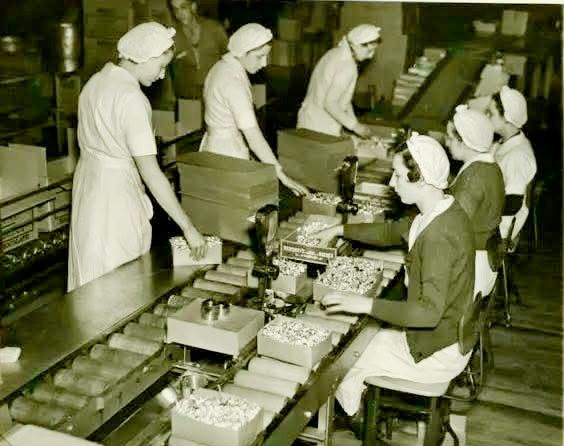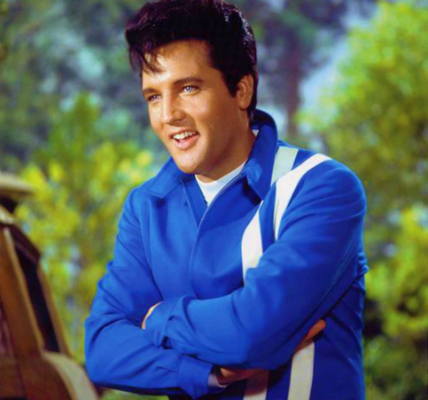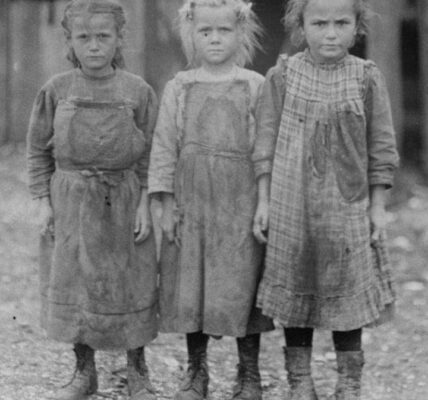Hand wrapping each Hershey kiss at the Hershey Factory Wrapping Department, circa 1936
Hand-Wrapping Hershey’s Kisses: A Glimpse into the Hershey Factory, 1936
In 1936, the Hershey Factory in Pennsylvania was a bustling hub of chocolate production, where workers carefully hand-wrapped each Hershey’s Kiss in delicate foil before it made its way to candy lovers across America. This meticulous process was a testament to the craftsmanship and dedication that defined the early days of mass chocolate production.

The Art of Hand-Wrapping
Unlike today’s automated wrapping machines, Hershey’s Kisses in the early 20th century were wrapped by hand. Skilled workers in the Wrapping Department sat at long tables, each person responsible for taking a freshly molded chocolate, placing it in a square of foil, and twisting the ends to ensure a secure and elegant presentation.
The silver foil that became synonymous with Hershey’s Kisses was not just for aesthetics—it helped protect the chocolate from melting and maintained its freshness. Workers had to be precise and efficient, as thousands of Kisses were produced daily, all needing to be wrapped before they could be packaged and shipped.

Life in the Hershey Factory
The Hershey Company, founded by Milton S. Hershey, was not just a chocolate factory but also a symbol of progress and opportunity during the 1930s. Even in the midst of the Great Depression, the factory provided stable jobs for many workers, especially women, who made up a significant portion of the Wrapping Department. Their speed and attention to detail ensured that each Hershey’s Kiss maintained the high quality
The work, though repetitive, required skill and coordination, as workers had to keep up with the steady pace of chocolate production. The atmosphere in the factory was one of camaraderie, with employees chatting and working in sync, knowing their efforts contributed to one of America’s most beloved treats.

The Transition to Automation
By the mid-1920s, Hershey had introduced the plume, the iconic paper strip that peeked out from the top of each Kiss. However, it wasn’t until 1921 that a rudimentary machine-assisted wrapping process began, and even then, hand-wrapping remained essential well into the 1930s. It wasn’t until the late 1940s that fully automated machines completely replaced the hand-wrapping process.

A Legacy of Craftsmanship
Looking back at the Wrapping Department of 1936, it’s clear that the workers played a crucial role in shaping the Hershey’s Kisses legacy. While modern production is now fully automated, the dedication of these early employees set the foundation for the success of one of the world’s most recognizable chocolates.
Each Hershey’s Kiss wrapped in 1936 was more than just a sweet treat—it was the result of careful craftsmanship, hard work, and an enduring commitment to quality.


